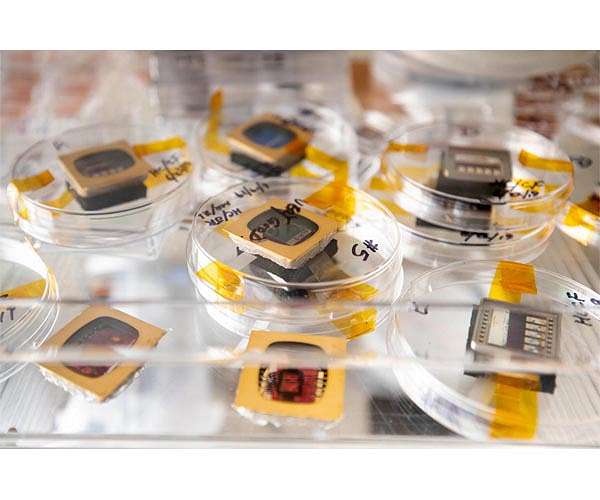Solving the interface mystery in organic solar cells makes them more efficient
New research from North Carolina State University provides a deeper insight into what exactly happens in organic solar cells when light is converted into electricity. Researchers developed a new method that visualizes interfaces where sunlight’s energy is converted into electrical charges and used the findings to develop a set of design rules that can improve the efficiency of organic solar cells.
Organic solar cells are made with carbon-based polymer materials that have the potential to be cheap, can be made from materials that are abundant on Earth, and have a number of attractive features – such as the fact that they can become semi-transparent or transparent made. window applications. Furthermore, as thin-film solar cells they have the potential for lightweight and flexible solar applications suitable for roll-to-roll production – making them also easy to transport and install.
However, organic solar cells have not been as efficient as silicon or perovskite solar technologies at converting light into electricity.
“Organic solar cells are made from a mixture of two materials,” says Aram Amassian, co-corresponding author of an article on the work and a university faculty scientist and professor of materials science and engineering at North Carolina State University.
“Both materials extract electrons from sunlight. However, one of the materials is a polymer that captures electrons, but then must interact with the second material to pass those electrons on. The polymer is called a donor material; the other substance, usually a small molecule, called the acceptor material. We knew that interfaces between donor and acceptor materials were responsible for a voltage drop – which currently limits the efficiency of organic solar cells. Our goal with this work was to gain a deeper understanding of which aspects of interfaces were responsible for the voltage drop so that we can improve them.”
To address this challenge, the researchers developed a scanning probe microscopy method that allowed them to map not only the topographical features of the donor and acceptor mixture, but also the energy characteristics of the donor and acceptor materials at the interfaces – such as the energy -properties of the donor and acceptor mixture. gradient at the interface and how disordered the donor and acceptor materials are at the interface.
“This technique allowed us to determine how the degree of disorder of donor and acceptor molecules at the interface affected the energy disorder,” said Daniel Dougherty, co-corresponding author of the paper and professor of physics at NC State. “Once we mapped the energies of all these interfaces, we were able to compare those findings with the results of conventional methods that characterize the overall voltage drop performance of an organic solar cell.”
The team still had to overcome a major challenge. Because the scanning probe microscopy technique does not directly measure voltage drop, the team could not say which interface was the main culprit.
“Mixtures of donor and acceptor materials create many different types of interfaces at the same time, and it is not clear which interfaces are responsible for voltage losses,” says Amassian.
“Our research has shown that the functional interface in modern high-performance organic solar cells, such as PM6:Y6, is the sharp donor-acceptor interface,” says Dougherty. “The findings imply that this type of interface should be deployed to further reduce voltage losses.”
“Once we identified the functional interface associated with voltage drop, we conducted a series of studies on what factors influenced voltage drop,” says Amassian.
“There has long been a debate in the organic solar cell community between those who argued that voltage drop was caused by energy differences between the constituent donor and acceptor materials, and those who argued that voltage drop was caused by energetic disturbances along interfaces. Our experiments show that both sides are right, it’s a combination of both factors.”
The researchers successfully demonstrated that it is possible to ‘fix’ the energy difference and tune the disorder at interfaces by changing the way the donor and acceptor are mixed during fabrication, so that the voltage drop is reduced as much as possible .
“By taking into account one of the causes of voltage drop, we were able to identify technical solutions that will help the organic solar cell community minimize the other cause of voltage drop,” says Amassian.
“Essentially, voltage losses are reduced by selecting a few materials with minimal energy offsets. Practitioners can then further reduce energy losses by identifying a solvent and processing parameters that significantly reduce interfacial disorder. We are optimistic about the design rules we can achieve with this technique have developed can be used to inform research and development in organic solar cells.”
Research report:Mapping the interfacial energetic landscape in organic solar cells reveals pathways to reducing non-radiative losses

